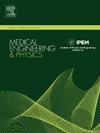Improving spike sorting efficiency with separability index and spectral clustering
IF 1.7
4区 医学
Q3 ENGINEERING, BIOMEDICAL
引用次数: 0
Abstract
This study explores the effectiveness of spectral clustering for spike sorting and proposes a Separability Index to measure the difficulty of spike sorting for a signal. The accuracy of spectral clustering is evaluated using different feature sets, including raw samples, first and second derivatives, and principal components analysis (PCA), and compared to two previously published methods. The results obtained over a dataset including 16 signals show that raw samples, with an average accuracy of 73.84 %, are effective for spectral clustering-based spike sorting. The analysis demonstrates that the proposed Separability Index can be utilized to classify signals beforehand, reducing the cost and processing time of large datasets. Furthermore, the proposed index can reveal spike sorting difficulty, making it a valuable tool for comparing the performance of various spike sorting methods in depth. The proposed method has higher accuracy (up to 23 %) compared to two previously published methods, and its accuracy is aligned with the Separability Index (correlation coefficient = 0.71). Overall, this study contributes to the field of spike sorting and offers insights into leveraging spectral clustering for this task.
利用可分性指数和光谱聚类提高尖峰分选效率
本文探讨了谱聚类对信号尖峰分类的有效性,并提出了一个可分离性指标来衡量信号尖峰分类的难度。使用不同的特征集,包括原始样本、一阶导数和二阶导数以及主成分分析(PCA)来评估光谱聚类的准确性,并与之前发表的两种方法进行比较。在包含16个信号的数据集上获得的结果表明,原始样本的平均准确率为73.84%,是基于光谱聚类的峰值分类的有效方法。分析表明,所提出的可分性指标可以提前对信号进行分类,降低了大数据集的成本和处理时间。此外,所提出的指标可以反映出尖峰排序的难度,使其成为深入比较各种尖峰排序方法性能的有价值的工具。与之前发表的两种方法相比,该方法具有更高的精度(高达23%),其精度与可分性指数(相关系数= 0.71)一致。总的来说,这项研究有助于脉冲分类领域,并为利用光谱聚类来完成这项任务提供了见解。
本文章由计算机程序翻译,如有差异,请以英文原文为准。
求助全文
约1分钟内获得全文
求助全文
来源期刊

Medical Engineering & Physics
工程技术-工程:生物医学
CiteScore
4.30
自引率
4.50%
发文量
172
审稿时长
3.0 months
期刊介绍:
Medical Engineering & Physics provides a forum for the publication of the latest developments in biomedical engineering, and reflects the essential multidisciplinary nature of the subject. The journal publishes in-depth critical reviews, scientific papers and technical notes. Our focus encompasses the application of the basic principles of physics and engineering to the development of medical devices and technology, with the ultimate aim of producing improvements in the quality of health care.Topics covered include biomechanics, biomaterials, mechanobiology, rehabilitation engineering, biomedical signal processing and medical device development. Medical Engineering & Physics aims to keep both engineers and clinicians abreast of the latest applications of technology to health care.
 求助内容:
求助内容: 应助结果提醒方式:
应助结果提醒方式:


